The Tesla Model S is a great car in which to be in a crash. Its mostly aluminum structure is very solid. The car is also extremely large, there are not many cars bigger than the Model S. The Model S is also very heavy, there are not many cars heavier than the Model S. Being big, solid, and heavy always helps in a crash, particularly if you are hitting other smaller, lighter, less well built vehicles. However, the Model S cannot qualify for the United States’ highest safety rating, which is the IIHS Top Safety Pick+ rating (TSP+).
The reason the 2014 Tesla Model S cannot qualify is that it is now about 5 years behind the general automotive industry in active safety. Active safety measures are things like systems that spot an impending crash ahead or behind and then both alert the driver to the coming threat, or goes further. Many vehicles now will automatically brake a car, some to a complete stop using full braking force, if the driver does not, or cannot, react in time. If you think that the cars that do this are expensive European luxury models you are mistaken. In fact, the most highly rated cars in this safety category are actually very affordable family cars.
Tesla’s Model S has not yet been tested by the Insurance Institute for Highway Safety (IIHS). There are two main reasons for this. First, the IIHS generally tests more mainstream cars made in higher volumes. However, that reason is starting to become questionable. As Tesla proudly proclaims, it was the highest selling model in its price range in 2013 ($70K to $120K). The IIHS has also tested cars that come close to the Tesla in size, sales volume and price. For example, the IIHS has tested the Audi A6 in the past.
The second reason is that Tesla has not asked for the Model S to be tested. This could be strategic. The Model S did very well on the US government mandated test, the NHTSA test. The NHTSA testing is fine, but it is behind the IIHS in terms of both rigor and sophistication. Tesla likes to proclaim it is the safest car on the road because none of its occupants have been killed in a crash. We very much hope that continues. However, people have been in killed in crashes involving Model S cars. In two separate and widely reported cases, two people in an Accord were killed when a Model S crossed the center line, and in another accident a bicyclist was killed by an out of control Model S that also crossed over into on-coming lanes. Neither would have been prevented by forward collision protection systems, but a lane keeping / lane departure alert may have helped in the second case.
According to the IIHS website summary on how a car earns the TSP+ rating, a car must do three things, two of which are difficult. All cars shooting for the top rating must do well on everything IIHS has historically tested such as roof strength, side impact and frontal overlap crashes. All cars now ace those tests, and Tesla surely would too. However, the Model S would also need to score at least “acceptable” on the small frontal overlap test. This test has tripped up many luxury cars and there is no guarantee the Model S would do well. We suspect it would. Finally, a car is not even considered for the “+” part of the ranking, which separates the wheat from the chaff, unless the car “earns a basic, advanced or superior rating for front crash prevention” to quote the standards from the IIHS site. Tesla has no front prevention system. The top system ever tested was in a Subaru costing about $35,000.
Being in a crash is the end result of driver error and also a failure of many safety systems (active), and the start of the implementation of others (passive). There is little doubt that the Model S is a car with good passive safety and a strong structure. However, automotive safety has moved well beyond just passive safety. Now in its third year of sales, it is time that Tesla source or design safety systems for the Model S that are widely available on cars costing less than half its lowest cost model.
Related Stories:
Tesla Model S safer than any car ever tested by NHTSA
NHTSA says Tesla's 5.4 star crash test rating inaccurate
Three common safety features Tesla Model S must add now



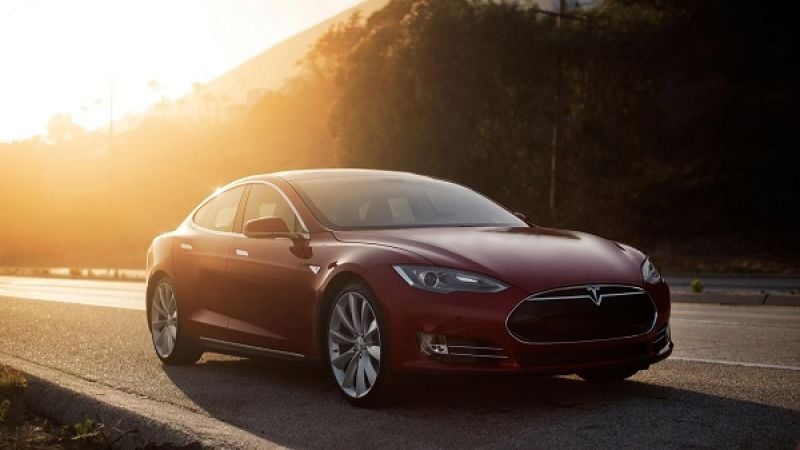




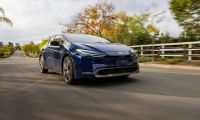
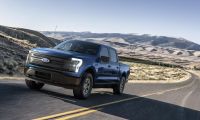
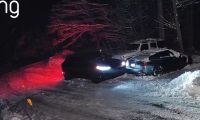
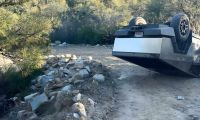
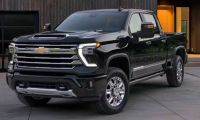
Comments
Amen! I agree completely
Permalink
Amen! I agree completely with this sentiment. Others may mock me for saying it, but active collision prevention is the one thing I have been waiting for to order a Model S. I think it is a car that I will hold onto for a while, and I thought it important to have on my "next" car. Fortunately, I think that the wait may be short. Elon Musk mentioned during his European trip that they intend to come out soon with active cruise, rear guidelines and improved seats. I am hoping by the end of the summer.
I would think that the fact
Permalink
I would think that the fact that they burst into flames when you run over loose gravel would be cause to exclude them from the list.
Wow...the ignorance here is
Permalink
Wow...the ignorance here is astounding. A vehicle is safe when it prevents injuries in an accident. It's the driver's job to avoid accidents. The Model S already has braking distances better than a lot of supercars. But, until we get to fully autonomous cars, a professional race car driver piloting a Honda Civic is likely to be safer than even the most sophisticated new car piloted by a nearsighted grandmother with slow reflexes. Honestly, if you need "active collision prevention" to avoid crashing your car, do us all a favor and just take the bus.
Thanks Charles I am glad you
Permalink
In reply to Wow...the ignorance here is by Charles McCormack (not verified)
Thanks Charles I am glad you added this perspective. Your point is valid, but I will add some real-life reasons why some disagree. First, I am active on the Tesla owners clubs. A Model S owner recently was brave enough to post that she hit another car from behind. I don't know all the details, but it sure seemed that if she was in a car with this technology she would not now be faced with trying to find a shop that will work on aluminum cars they have never before serviced, plus a deductible, plus a higher insurance rate. The FB administrator of that same club had a terrible experience trying to get his MS serviced mainly due to the aluminum issue (according to his many posts.) Second, you and me are great drivers and we don't need anything like this, right? What about when you and are a little older? What about if you and I lend our car to a family member (young son or that same older woman you mentioned.) I own fancy cars and I let my loved ones drive them. What if a pedestrian stumbles in front of the car from between two parked minivans and the car can react faster than we can? Just some things to think about. Your argument is valid, but the truth is all the cars in the MS price range now have this available and as the post below proves, Tesla is already projecting automated driving in its cars and many of its fans like that idea.
So by that logic anti-lock
Permalink
In reply to Wow...the ignorance here is by Charles McCormack (not verified)
So by that logic anti-lock brakes and stability control aren't safety items and don't count for anything? I think I'd rather have a car help my 16 year old daughter avoid the tree next to the icy road thank you very much.
Or how about teaching your
Permalink
In reply to So by that logic anti-lock by ivan (not verified)
Or how about teaching your daughter to pay attention to the road, not text, look next to and behind the lane she is changing to, etc... In my opinion people are relying on active safety systems as an excuse to be careless inattentive drivers.
The most important active
Permalink
The most important active safety feature a car could have is to block texting. How come no one has it?
Musk has announced that he will have a car that does 90% of the driving within 3 years. This will surely leapfrog the active safety competitors. When you are building a car company from the ground up in a few years, it is understandable that you might not have the latest active safety gadgets right away. Meanwhile, he is selling more Model S than Mercedes S, BMW 7 series, Audi 8 and Lexus LS. Not a bad start.
Thanks microsrfr. Products
Permalink
Thanks microsrfr. Products that disable texting, but still allow all cell phones to call emergency numbers are now available. I have done a lot of stories and research on the topic. Frankly, you are on the right track, but alcohol kills more people in cars (and accident rates also follow that) than texting by a factor of about 100 to 1. Here is a story about a product that does what you thought up. Thanks for reading and commenting:
http://www.torquenews.com/1083/new-device-will-finally-end-distracted-driving-due-cell-phones-and-texting
I am not sure how accurate
Permalink
In reply to Thanks microsrfr. Products by John Goreham
I am not sure how accurate the cell-phone related accident statistics are. Most drivers are loath to admit that they were distracted by texting or surfing. Personally I know two friends who have been hit from the rear while sitting at a red light by suspected texting drivers, one of them by a truck traveling 45 mph. They both barely survived, but have never fully recovered all of their mental/physical capabilities.
That's terrible and I am very
Permalink
In reply to I am not sure how accurate by microsrfr (not verified)
That's terrible and I am very sorry to hear that. I suspect you are right that distracted driving accidents are under-reported. Not to try to beat a dead horse, but forward collision prevention does work to help offset those types of accidents.
The Model S and previously
Permalink
The Model S and previously built Model S cars can be retrofitted with active safety equipment now (or soon)!
IIHS test results, including roof crush results (can it beat the ~25K pound C-max score?) will be interesting.